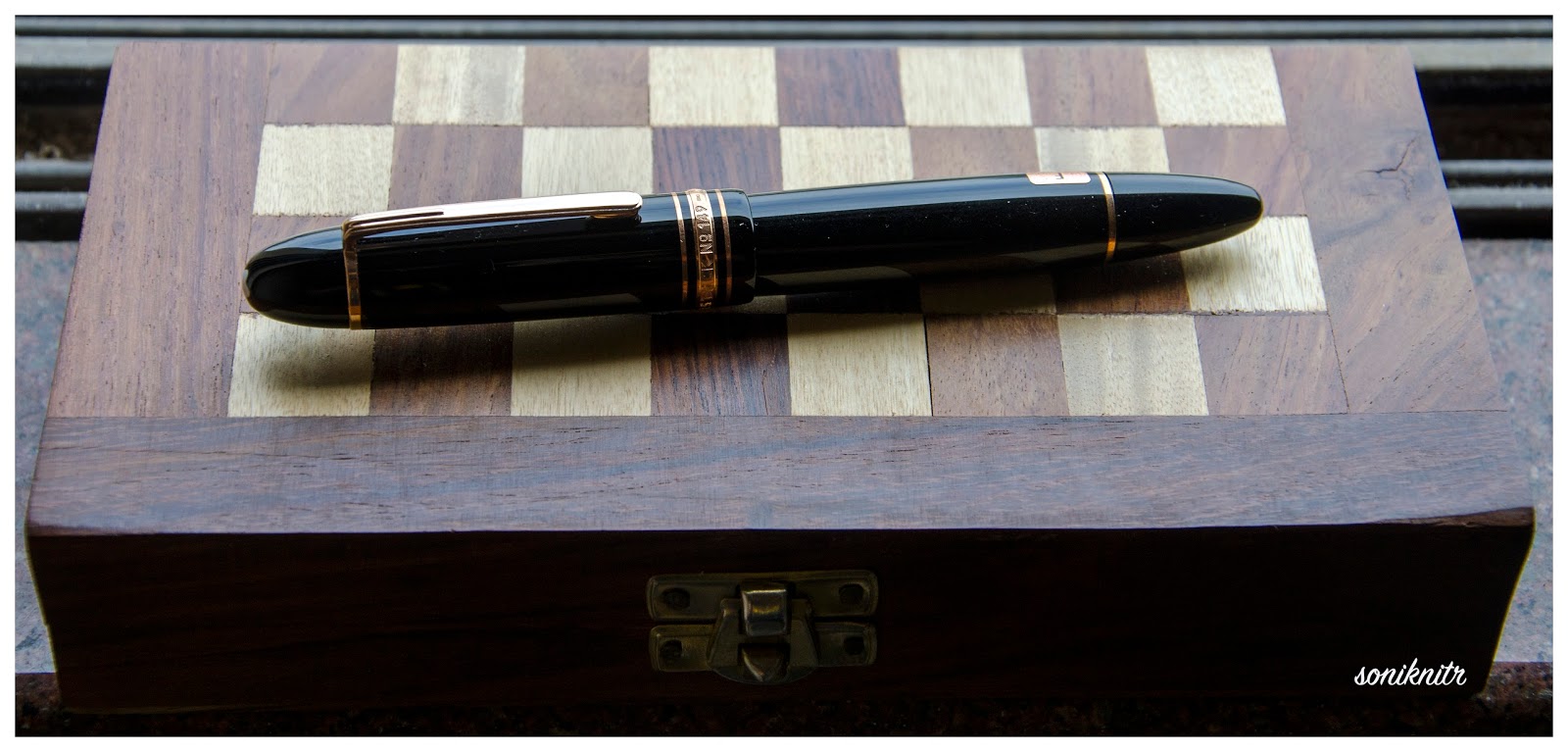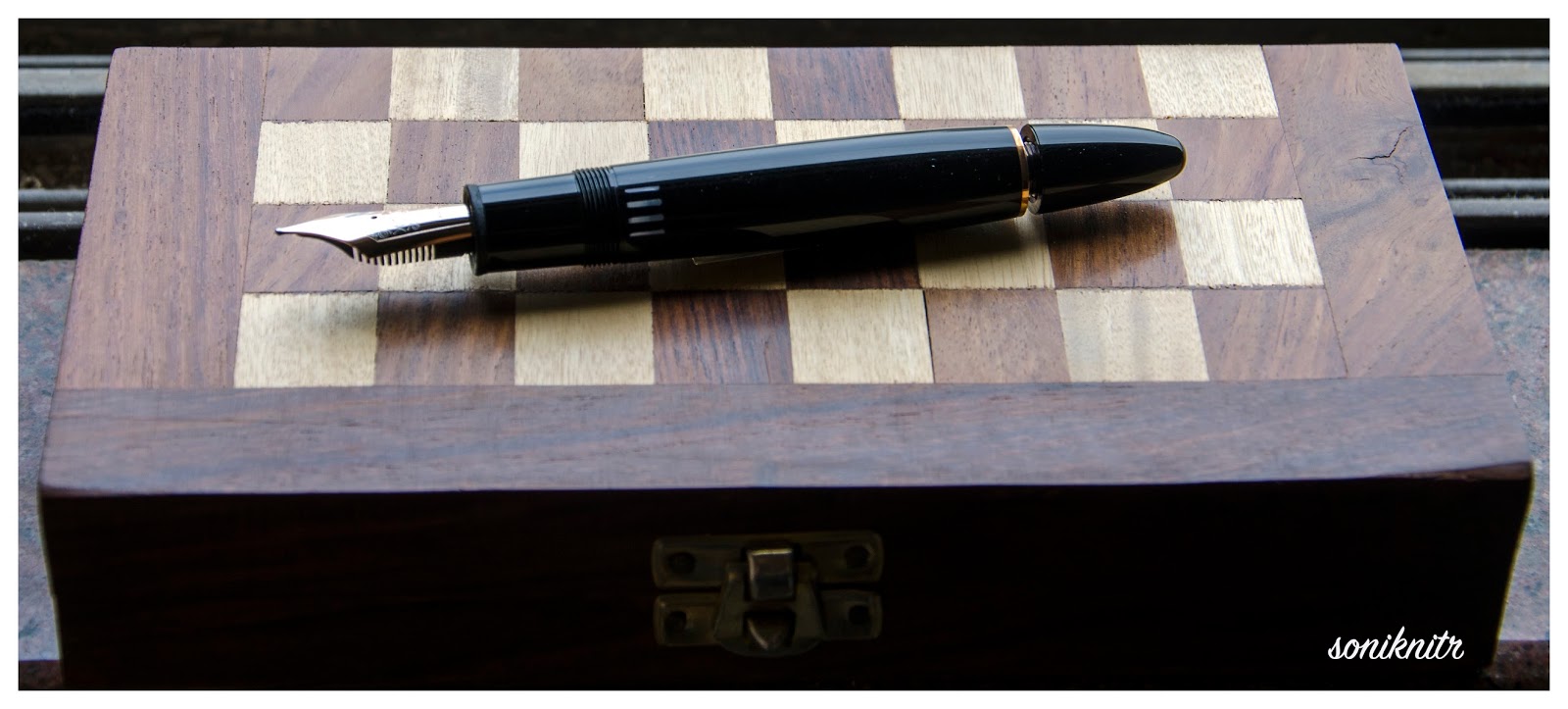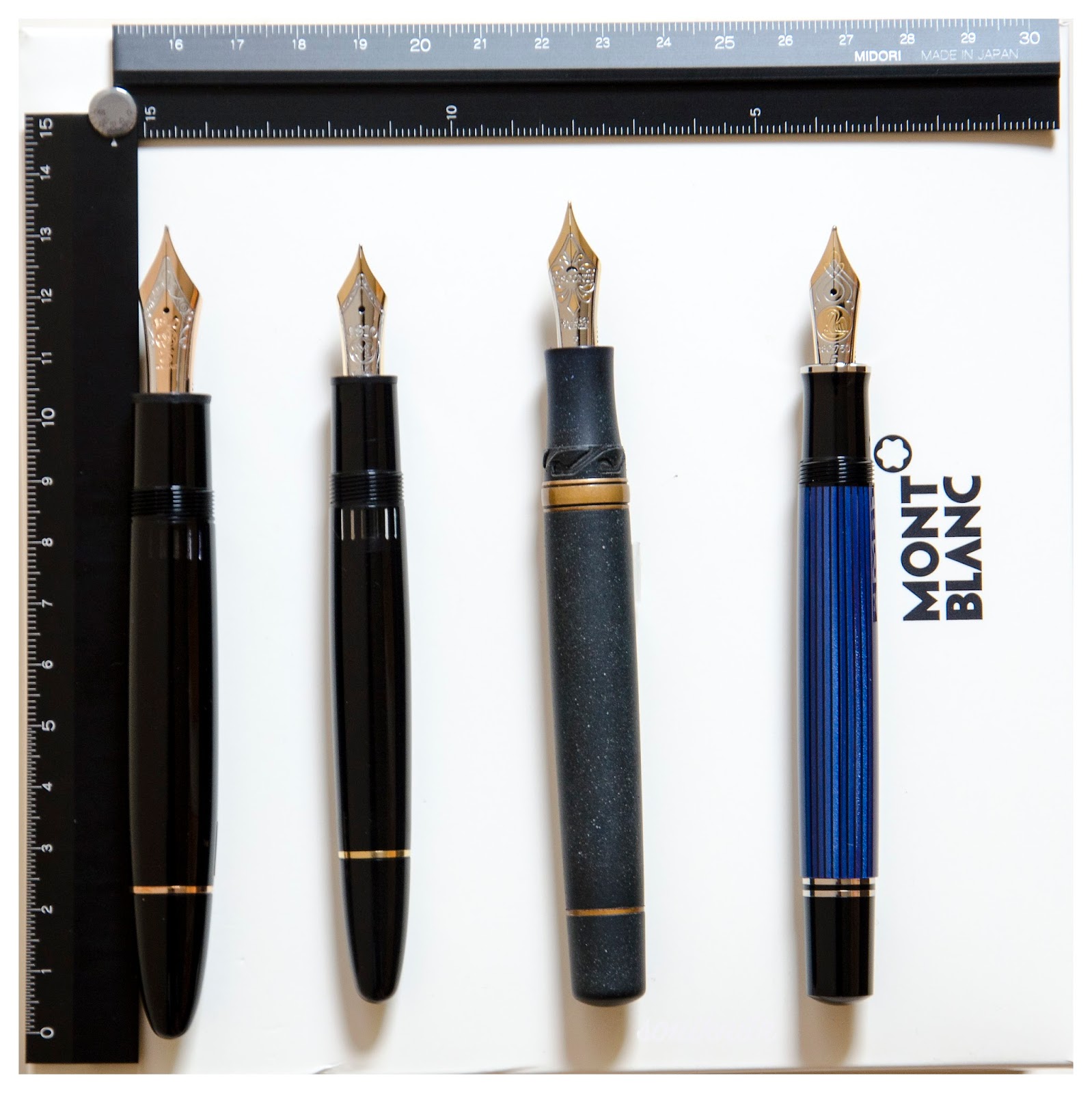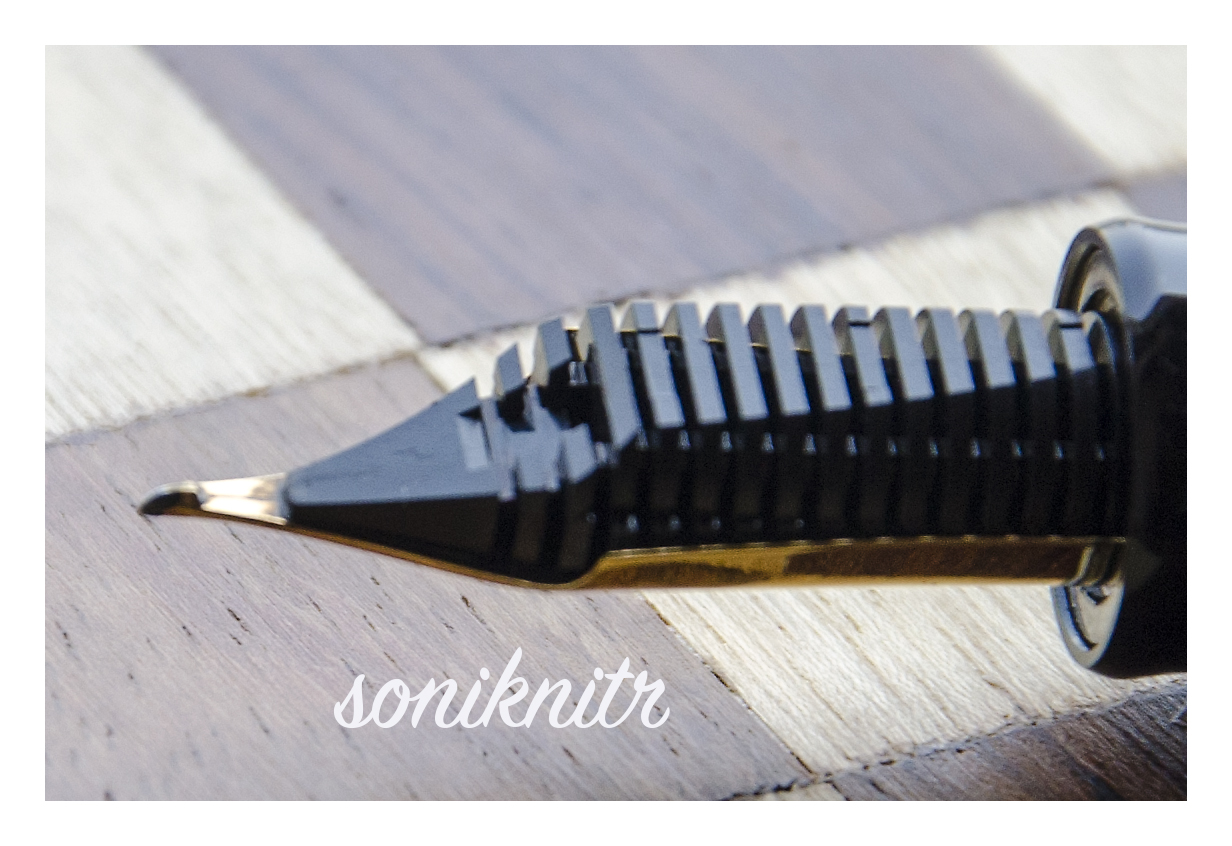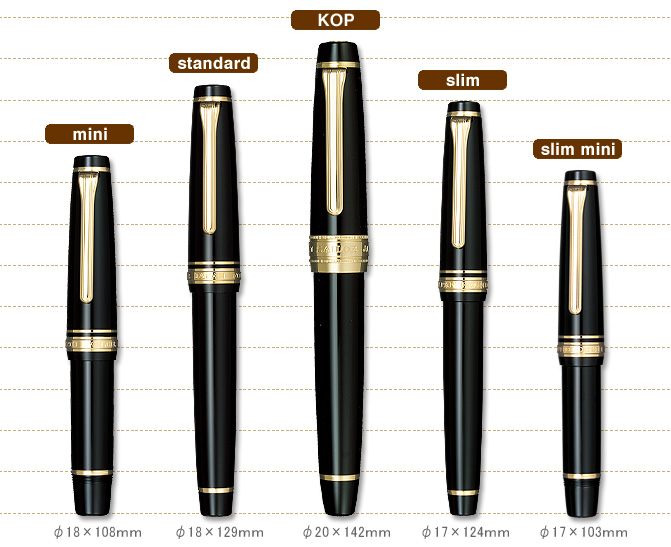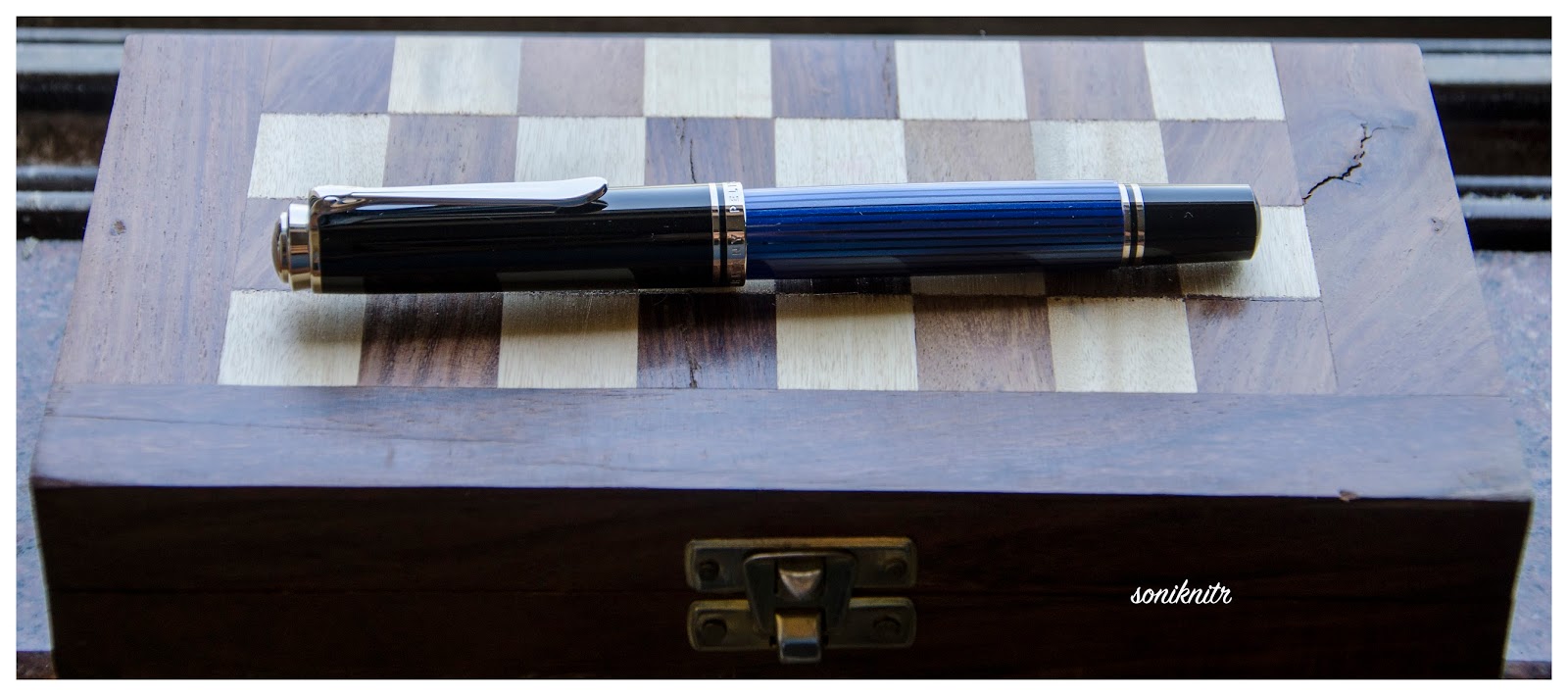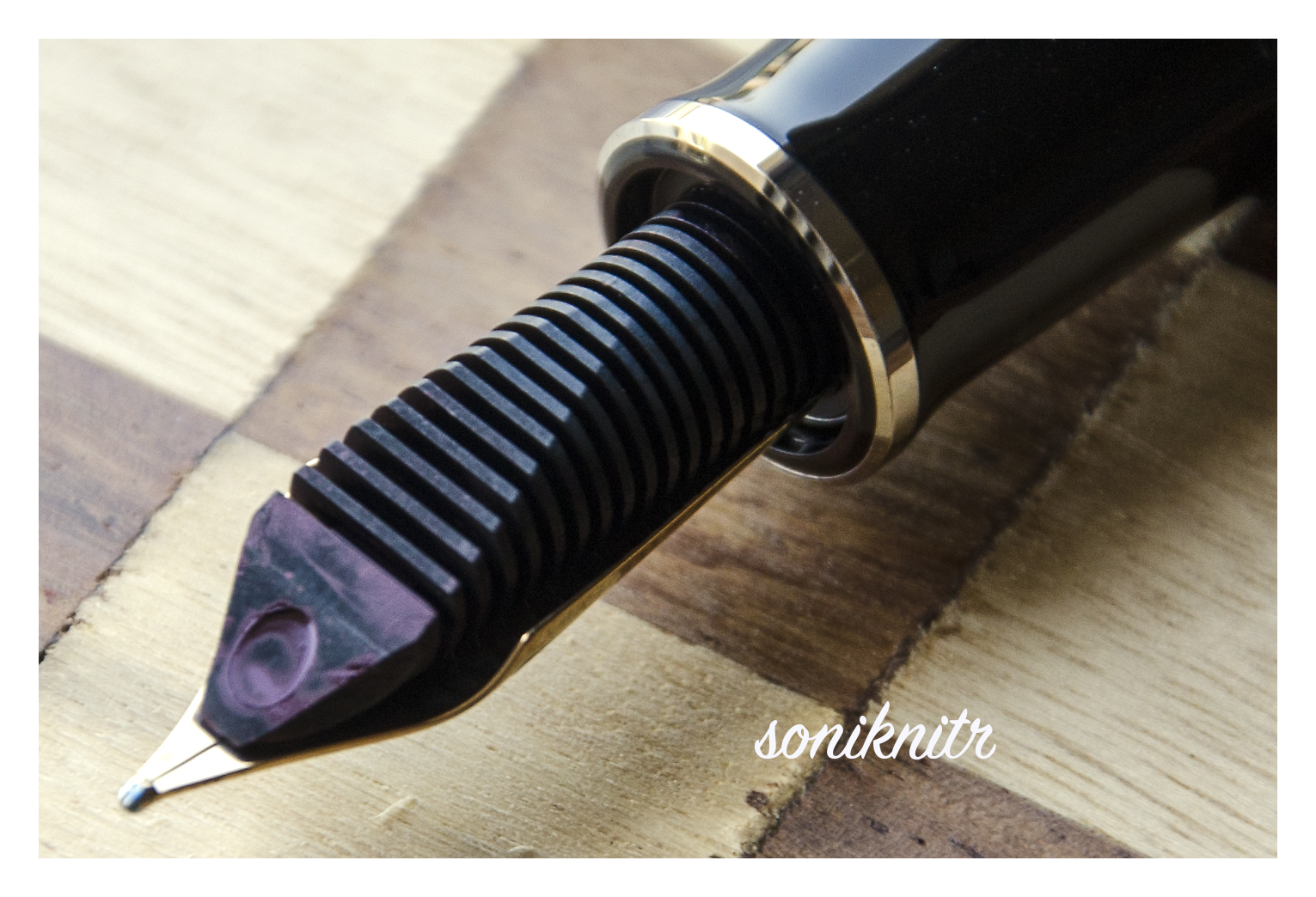PRELUDE
I was looking to gift my dad with a Montblanc pen for a long time. And it had to be a new one. Personally, I had bought a pre-owned MB 146 (the only pre-owned in my small collection), and I am more or less happy with it. It’s kind of ineffable but the right shape with the right balance, encompassed within a classical look seemed missing in some luxury pens, which I own. Personally, I feel that any pen above $ 100 is never a VFM and it’s rather a self-indulgence in fooling myself when I order one more expensive pen. May be it’s just applying theory of brand relativity when I try to convince myself that a Pilot 823 or a m800 is a VFM pen.
Back to the pen and it’s acquisition, the phenomenon was popularly known as the Apshankar hand wave within our small fountain pen group on the Telegram app. Actually, Kapil & Pradeep are the two main agents for urban poverty for many people including Vaibhav and me. Jokes apart, both are really fine people who are passionate about pens & paraphernalia and real good friends. Pradeep was kind enough to place an order for me from LCC & the pen travelled across the Atlantic Ocean with Kapil to finally land in my hand. While I was a bit unsure of the Red Gold trim, aesthetic opinions from both Kapil & Dennis (of LCC) helped me finalise on my choice.
HISTORICALLY SPEAKING
As most of you would know, Montblanc was started as Simplizissimus-Füllhalter in 1906 by a Hamburg banker, Alfred Nehemias, and a Berlin engineer, August Eberstein. Simplizissimus-Füllhalter means Simplistic Fountain pens and the founders had learnt about fountain pens with ink tanks from the US. By 1908, three other people by the name of Wilhelm Dziambor, Christian Lausen and later Claus Johannes Voss had taken over the business and the company took the name “Simplo Filler Pen Co.” which referred to a fountain pen design with a built-in ink-tank.
In 1909, a safety fountain pen made up of hard rubber called “Rouge et Noir” was launched, which actually translates into Red and Black. The pen consisted of a red cap and a black body, perhaps inspired from the card-game. You can also find a limited edition of the same. In 1910, the company became Mont Blanc, inspired by the highest peak of the Alps (4810 m) and a pen called Montblanc was introduced with a white tip (which would later evolve into the classical white star in 1913). In 1926, the Meisterstück was launched. By 1929, the nibs were engraved with 4810, the official height of Mont Blanc peak, as an allusion to superior quality and craftsmanship. The flagship Meisterstück 149 was launched in 1952, evolving from celluloid & brass mechanism to resin & plastic mechanism over the years. The 149 was reintroduced with a triple tone 18k nib (they are 2 colours really) somewhere around 1995.
For the conventions of MB, as far as the model numbers XYZ (149) are concerned, it did traditionally follow a naming convention, albeit in a rather loose manner
- X or 1: Tier of pen, 1 - Top class or Meisterstück 2 - Medium range & 3 - Economy
- Y or 4: 0 - Safety filler, 2 - Button Filler, 3/4 - Piston Filler
- Z or 9: Nib size, 9 being the largest
MB has eventually stopped production of all economy pens in 1992.
PRESENTATION (6/6)
The pen came inside a luxury gift box, with an user manual cum warranty card and a 60 mL bottle of Montblanc Mystery Black Ink. I hope that the pictures below will be able to do a justice, especially when you are gifting the pen to someone dear. I am someway bound to appreciate this presentation with a full rating.
DESIGN - THE CLASSIC CIGAR (6/6)
Glistening with red gold with a non pretentious shine of black preserves a culture, while simultaneously adding a touch of modern luxury. While Red gold, Rose Gold & Pink Gold are often used interchangeably, 18k Red Gold is actually made of 75% gold and 25% copper, Rose & Pink gold add up 2.5% to 5% of silver which balances out the copper. The 149 is available in three delightful trims - Gold, Red-Gold and Platinum. The pen along resting against the shoe shaped ink bottle looks awesome to me.
While the pen does not look or feel hefty, it has the semblance of an oversized pen. The clip starts with a tiny piece of elevated ramp preserving tradition. The thin and thick cap bands along with the piston rings complete the minimalistic design of the pen with grace. The clip is tension fit and carries a serial number and GERMANY along the ring. On its underside carries multiple engravings this day, however the engravings could be completely dependant upon the year of manufacture. There are a lot of Chinese fakes flooding both online and offline channels, which is why Montblanc has to come up with newer and innovative hallmarks with every model.
A quick pose with its smaller cousin 146 in gold trims. Red Gold vs Gold.
It is oversize but I almost never feel the heft while I hold the pen. The cap unscrews with a single turn revealing a red gold nib with a rhodium inlay. It also reveals the beautiful striped ink windows just above the section threads. The attention to details is kind of amazing. The section ends up with a little bump with a rougher loop of resin, before the mind delves into the dazzle of the rhodium inlaid red-gold nib.
The cap does mention MONTBLANC - MEISTERSTÜCK No 149 etched across the broader of the parallel cap bands in cross-hatched characters, while two thinner bands subtly play along with it. The finial of course carries the white-star. There is a tiny hole in the cap meant to equalise the ambient pressure and avoid inking of the cap. I think it could be a very recent modification. Some of the earlier 149s don't have it. There are some hallmarks including metal written on the underside of the clip to preserve MB’s product authenticity.
FILLING SYSTEM (6/6)
The piston is distinguished by a red gold band and is very convenient to operate. The piston end unscrews with less than three rotations and as the white piston head moves along the ink-windows. Once screwed back inside the bottle, ink gushes inside the barrel. The brass connector renders some weight to the barrel. The feeder hole assists in efficient ink intake for an oversize nib. The manual carries graphical steps for filling the pen in case your are using a piston filler for the first time. The ink windows still rule my thoughts. The ink capacity is around 1.6 - 2 mL.
NIB - ALL THAT MATTERS (6/6)
The dazzling triple-tone nib is tested by hand, and comes in eight different widths including EF, F, M, OM, OB, OBB, B & BB and a signature replacement width of O3B. And of course it looks awesome given its size and glamor content. The size and spread of the nib are just gorgeous.
A bounded layer of spiral galaxies rest within the rhodium inlay while red gold defines the decors in the outer tines as well as the inner body. Then, there is a dazzling red gold M logo resting inside the encircled star, above which rest the height of Mont Blanc peak, 4810 (m). This one is a fine nib and lays a smooth wet line. The tail end specifies the composition Au750 of the gold-alloy and the brandname of MONTBLANC rests above the tail. Between those there is a hallmark of StOD inside a crossed ellipse. There is no mention of width on the nib per se, while a sticker at the piston end of the barrel says it all.
A black plastic feed (earlier ones had ebonite feeds) with a feeder hole improves ink suction while closely spaced horizontal fins ensure a good ink buffer and promise wet and smooth starts. Even with a dipped nib section, it can a few paragraphs.
PHYSICS OF IT (6/6) – RELATIVELY SPEAKING
The overall capped length is around 14.8 cm. I would prefer to use the pen unposted as both weight and balancing seem perfect with an awesome nib leverage. The section has a comfortable grip of around 1.3 cm. I feel it’s a very comfortable from an overall perspective balancing amazingly well for an oversized nib.
- Uncapped Length ~ 13.3 cm
- Posted Length ~ 16.8 cm
- Exposed Nib Leverage ~ 2.8 cm
- Overall Weight ~ 32 g (without ink, cap weight~10 g)
Below are the pictures along with a MB146, Visconti HS Maxi and a Pelikan m805 for your reference.
ECONOMIC VALUE (3/6)
An expensive retail price of above USD 900 puts off people, while getting a pre-owned does save some money, while you keep the charm of writing with a 149. When it comes to the internet, one has to be careful regarding the abundance of fakes in the online marketplaces and the best fakes are costly and are quite difficult to identify without experience. I am not going to discuss the pricing, but I had more than a reasonable discount, thanks to Kapil. And for me it’s a gift (although I could end up using it :P) and the price didn’t matter. Although personally speaking, I would have preferred a pre-owned 149 in a great shape.
OVERALL (5.5/6)
The writing experience is as amazing as the nib looks, with just the kind of control which you would require from a superb nib. Both Kapil & Dennis had tested it before packing. There is spring and softness in the nib and an absence of any line variation between the horizontal and vertical strokes. The lines dry in 30 seconds with a MB Mystery Black ink running on MD Paper.
With other inks the width is good enough to reflect some shading too. The best part perhaps is the balance that Montblanc could find with an oversize nib, so that it does not feel unwieldy. I initially had my own doubts regarding the size but I did try the 149 in a MB boutique then Pradeep’s 149, to be certain. The nib never skips and always lays a wet line, and seems to be one of the best oversized nibs in my small collection. I am sorry I couldn't gather the courage to put some pressure and try flexing some characters out from this one.
REFERENCES
StOD Hallmark
Thank you for going through the review.
You can find some more pen and paraphernalia reviews here.
Thank you for going through the review.
You can find some more pen and paraphernalia reviews here.




